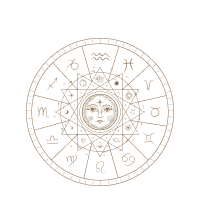
The Rhythms of Life: Biological Rhythms in Psychology
This article delves into the fascinating world of biological rhythms and their psychological impacts, offering insights into how our bodies naturally sync with the world around us.
article by Adrian Wallace
Introduction to Biological Rhythms
Biological rhythms, ubiquitous throughout the natural world, are the repetitive cycles that guide the behaviors and physiological processes of organisms. In psychology, understanding these rhythms is crucial for comprehending how humans adapt to the cyclical patterns of the environment. From the sleep-wake cycle governed by circadian rhythms to the ebb and flow of hormonal levels, our bodies are tuned to an intricate biological clock. These rhythms influence our physical health, cognitive abilities, and even our emotions, orchestrating a subtle dance between our internal physiology and the external world.

Circadian Rhythms: Masters of Our Day
At the core of biological rhythms in psychology are the circadian rhythms, roughly 24-hour cycles integral to our daily lives. Governed by the suprachiasmatic nucleus in the brain, these rhythms regulate sleep patterns, alertness, and performance levels throughout the day. As we move into 2024, understanding our personal circadian rhythms can lead to improved sleep hygiene, better work schedules, and optimized productivity. Psychologists emphasize the importance of aligning our lifestyle with our natural circadian tendencies to enhance well-being and reduce stress.

Ultradian and Infradian Rhythms: Beyond the Daily Cycle
While circadian rhythms dominate daily patterns, ultradian and infradian rhythms provide a deeper understanding of human psychology. Ultradian rhythms, occurring more than once a day, such as the stages of sleep, influence our rest and recovery processes. On the other hand, infradian rhythms, like the menstrual cycle, operate over a period longer than a day and impact mood and behavior. As we look toward the future, incorporating an awareness of these rhythms in therapies and lifestyle adjustments may foster psychological resilience and emotional balance.

Seasonal Affective Disorder: A Case of Rhythmic Disruption
Seasonal Affective Disorder (SAD) exemplifies the psychological impact of disrupted biological rhythms. Characterized by depressive episodes during specific times of the year, SAD is believed to result from misalignments between internal rhythms and seasonal changes. Astrological forecasts for 2024 include significant celestial transitions that may influence environmental factors, potentially affecting those with SAD. Psychology professionals advocate for light therapy, alongside traditional treatments, to realign biological clocks and mitigate SAD symptoms.

Biorhythms and Compatibility
Biorhythms also play a pivotal role in the field of compatibility, where psychological and astrological insights intersect. Charting biorhythms could shape relational dynamics and personal interactions in the coming years. The synchronization of emotional, intellectual, and physical cycles between individuals might contribute to deeper understanding and stronger relationships, with astrological insights for 2024 and beyond enhancing the personalization of such analyses.
Personalizing Your Rhythms
As we forge into the future, personalizing and respecting our individual biorhythms could revolutionize psychological health and personal growth. Technologies such as wearables and apps for monitoring physiological patterns offer unprecedented opportunities to harmonize our lives with our innate rhythms. By paying attention to our personal cycles and adjusting our habits accordingly, we could reach new heights in health, productivity, and spiritual well-being.
Published: 1/30/2024
Modified: 1/30/2024
More predictions
Come back here soon to learn more about yourself and your future


The Intrigue of Birthday Biorhythm Compatibility
Delve into the fascinating world of biorhythm compatibility, and discover how birthday timings influence relational dynamics and personal synergy.


Is Biorhythm Compatibility a Fact or Myth?
Delve into the realm of biorhythms to discover if the science of bio-rhythmic compatibility holds water in harmonizing relationships.


Birthday Biorhythm Compatibility: Key to Harmonious Relations
An insightful guide into how birthday biorhythm compatibility influences personal interactions and relationships.